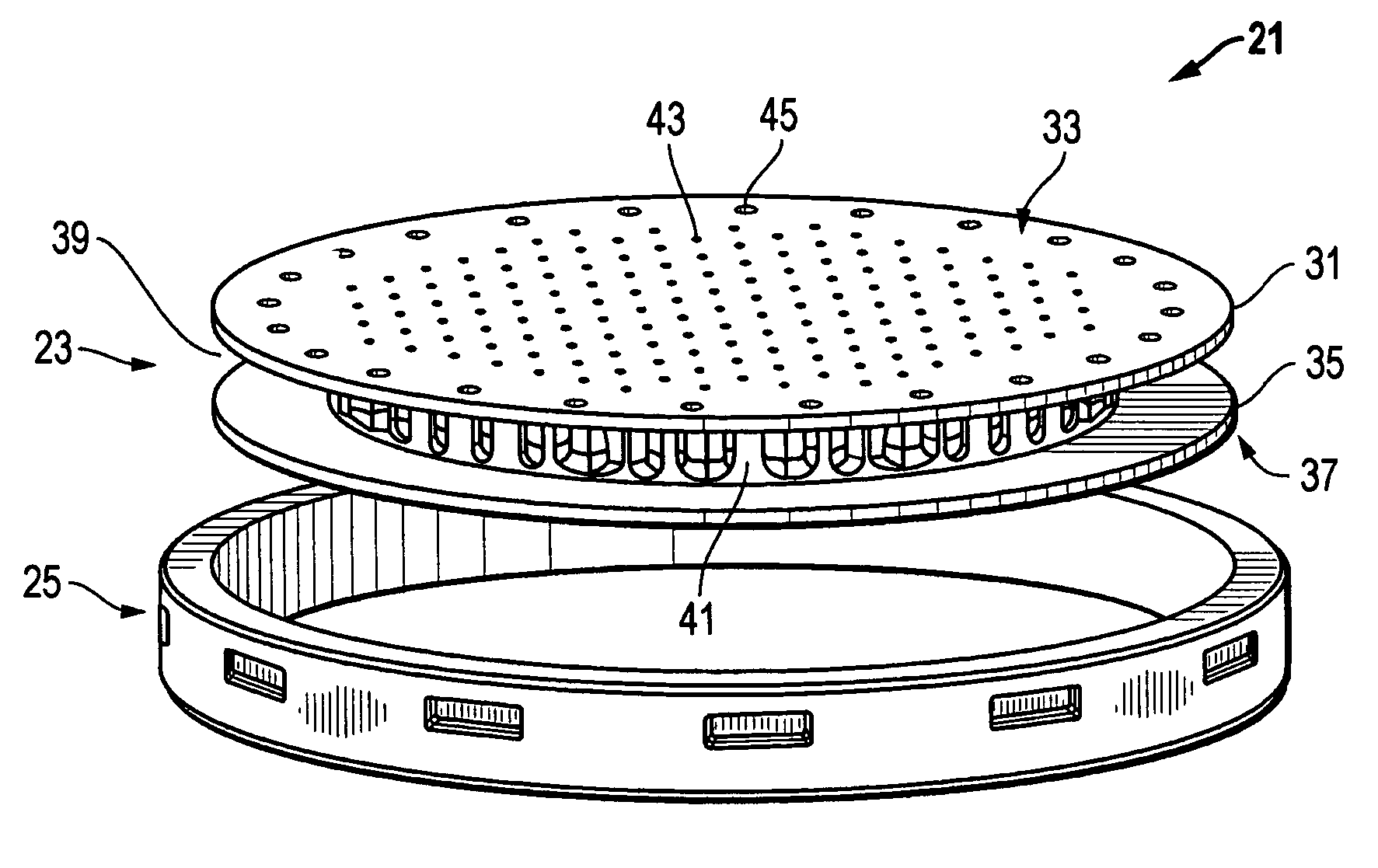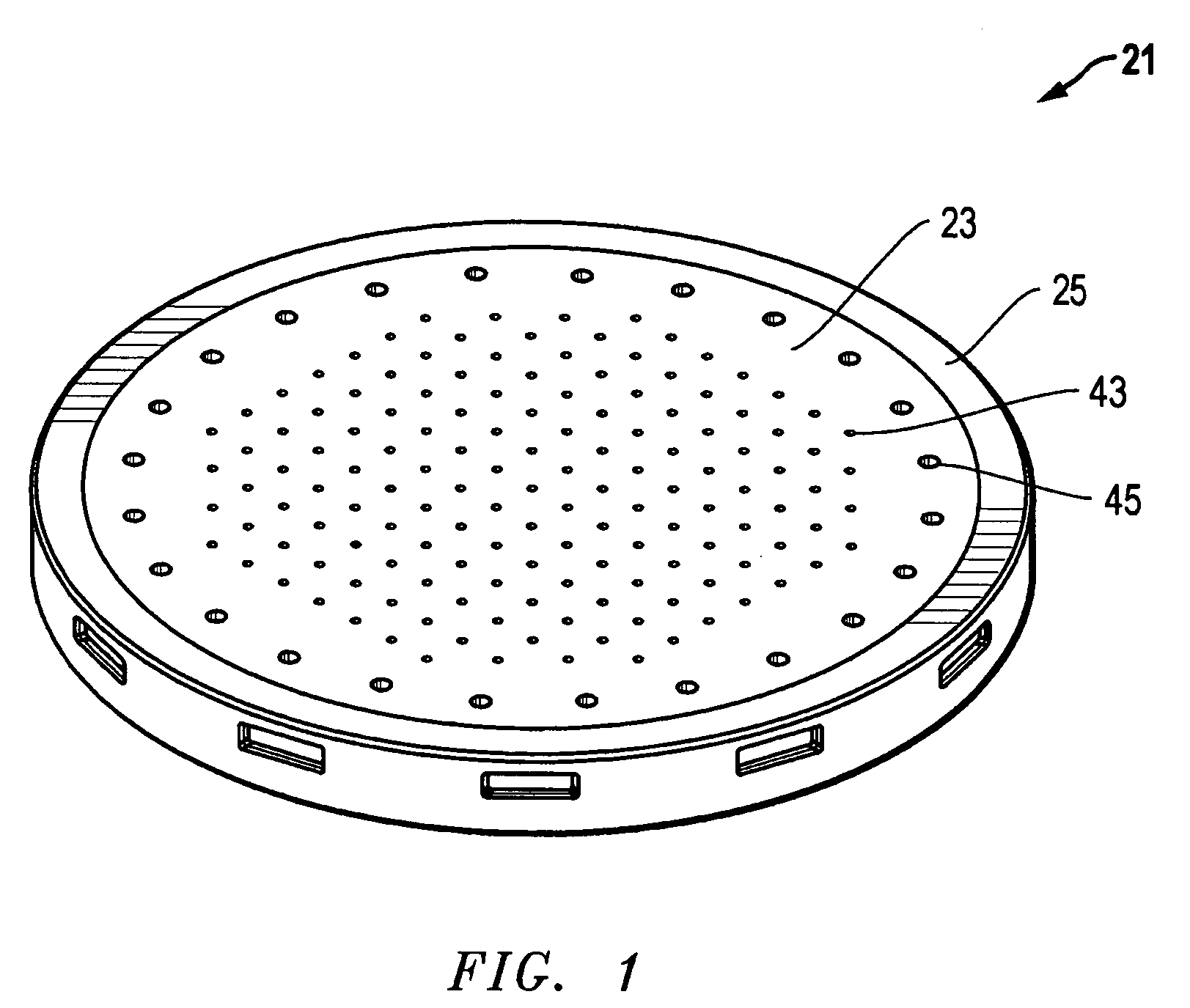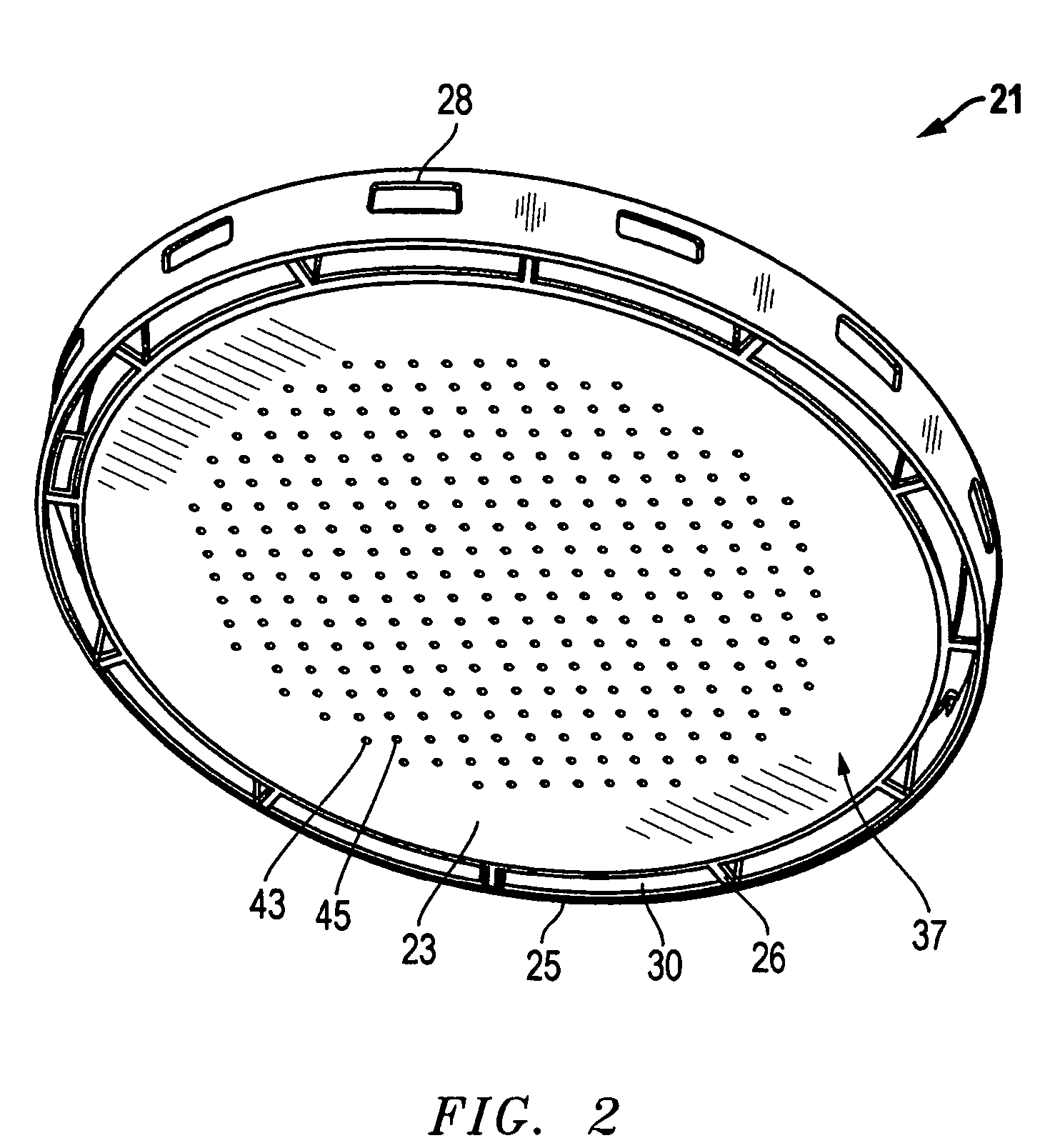System, method, and apparatus for dual gas delivery through a high temperature artifact without undesirable gas mixing
a high temperature artifact and gas delivery technology, applied in the direction of machines/engines, gas-gas reaction processes, transportation and packaging, etc., can solve the problems of graphite porousness, inability to manufacture and assemble high temperature artifacts into a geometry that contains gas flow channels that do not allow gas mixing, and a significant obstacle to maintaining separation between the two gases with components fabricated from non-reactive materials, etc., to achieve the effect of reducing the risk and difficulty
- Summary
- Abstract
- Description
- Claims
- Application Information
AI Technical Summary
Benefits of technology
Problems solved by technology
Method used
Image
Examples
Embodiment Construction
[0018]Referring to FIGS. 1-6, one embodiment of an apparatus, system, and method of separately conveying two gases through an apparatus or artifact 21 without mixing the gases as they are transmitted through the artifact is disclosed. The artifact 21 comprises two components 23, 25 that are preferably each machined separately or independently from a solid block of material to form two, completely integral structures. The first component 23 is a cylindrical spool having an inlet plate 31 (FIG. 3) with an inlet surface 33 and an outlet plate 35 with an outlet surface 37. The inlet and outlet plates 31, 35 are spaced apart from each other to define an interior having a perimeter 39 that is at least partially exposed to an exterior of the first component 23.
[0019]The first component 23 also has a plurality of integral posts or columns 41 extending between the inlet and outlet plates 31, 35 that are accessible from the perimeter for machining or fabrication purposes. In the embodiment sh...
PUM
 Login to View More
Login to View More Abstract
Description
Claims
Application Information
 Login to View More
Login to View More - R&D
- Intellectual Property
- Life Sciences
- Materials
- Tech Scout
- Unparalleled Data Quality
- Higher Quality Content
- 60% Fewer Hallucinations
Browse by: Latest US Patents, China's latest patents, Technical Efficacy Thesaurus, Application Domain, Technology Topic, Popular Technical Reports.
© 2025 PatSnap. All rights reserved.Legal|Privacy policy|Modern Slavery Act Transparency Statement|Sitemap|About US| Contact US: help@patsnap.com



